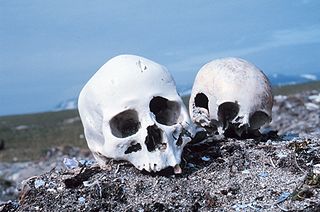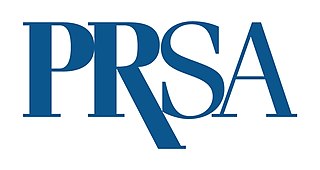
The Institution of Civil Engineers (ICE) is an independent professional association for civil engineers and a charitable body in the United Kingdom. Based in London, ICE has over 95,000 members, of whom three-quarters are located in the UK, while the rest are located in more than 150 other countries. The ICE aims to support the civil engineering profession by offering professional qualification, promoting education, maintaining professional ethics, and liaising with industry, academia and government. Under its commercial arm, it delivers training, recruitment, publishing and contract services. As a professional body, ICE aims to support and promote professional learning, managing professional ethics and safeguarding the status of engineers, and representing the interests of the profession in dealings with government, etc. It sets standards for membership of the body; works with industry and academia to progress engineering standards and advises on education and training curricula.

In forensic science, questioned document examination (QDE) is the examination of documents potentially disputed in a court of law. Its primary purpose is to provide evidence about a suspicious or questionable document using scientific processes and methods. Evidence might include alterations, the chain of possession, damage to the document, forgery, origin, authenticity, or other questions that come up when a document is challenged in court.

The Association for Information Science and Technology (ASIS&T) is a non-profit membership organization for information professionals that sponsors an annual conference as well as several serial publications, including the Journal of the Association for Information Science and Technology (JAsIST). The organization provides administration and communications support for its various divisions, known as special-interest groups or SIGs; provides administration for geographically defined chapters; connects job seekers with potential employers; and provides organizational support for continuing education programs for information professionals.
The Scientific Working Group on Bloodstain Pattern Analysis (SWGSTAIN) was created in March 2002 at a meeting held by the FBI Laboratory at the FBI Academy in Quantico, Virginia. It was decided that there was enough interest in bloodstain pattern analysis (BPA) to warrant the creation of the Scientific Working Group (SWG). According to the guidelines for organizing a SWG, the Scientific Working Group on Bloodstain Pattern Analysis (SWGSTAIN) generated and ratified a set of bylaws in accordance to the Scientific Working Groups published in Forensic Science Communications.

The Public Relations Society of America (PRSA) is a nonprofit trade association for public relations professionals. It was founded in 1947 by combining the American Council on Public Relations and the National Association of Public Relations Councils. That year it had its first annual conference and award ceremony. In the 1950s and 1960s, the society created its code of conduct, accreditation program and a student society called the Public Relations Student Society of America.
The Certified Fraud Examiner (CFE) is a credential awarded by the Association of Certified Fraud Examiners (ACFE). The ACFE association is a provider of anti-fraud training and education.
The Committee on Publication Ethics (COPE) is a nonprofit organization whose mission is to define best practice in the ethics of scholarly publishing and to assist editors, publishers, etc. to achieve this.
Crime reconstruction or crime scene reconstruction is the forensic science discipline in which one gains "explicit knowledge of the series of events that surround the commission of a crime using deductive and inductive reasoning, physical evidence, scientific methods, and their interrelationships". Gardner and Bevel explain that crime scene reconstruction "involves evaluating the context of a scene and the physical evidence found there in an effort to identify what occurred and in what order it occurred." Chisum and Turvey explain that "[h]olistic crime reconstruction is the development of actions and circumstances based on the system of evidence discovered and examined in relation to a particular crime. In this philosophy, all elements of evidence that come to light in a given case are treated as interdependent; the significance of each piece, each action, and each event falls and rises on the backs of the others."
Following is a partial list of professional certifications in financial services, with an overview of the educational and continuing requirements for each; see Professional certification § Accountancy, auditing and finance and Category:Professional certification in finance for all articles.

The CMT Association is a non-profit, global, professional organization of technical analysts headquartered in New York City. The CMT Association certifies that an individual is competent in the use of technical analysis via the Chartered Market Technician (CMT) designation.

The South African Translators' Institute (SATI) is the largest association in South Africa representing professional, academic and amateur translators and other language practitioners.
The National Athletic Trainers' Association (NATA) is the professional membership association for certified athletic trainers and others who support the athletic training profession. Founded in 1950, the NATA has grown to more than 43,000 members worldwide. The majority of certified athletic trainers choose to be members of NATA to support their profession and to receive a broad array of membership benefits.

A comparison microscope is a device used to analyze side-by-side specimens. It consists of two microscopes connected by an optical bridge, which results in a split view window enabling two separate objects to be viewed simultaneously. This avoids the observer having to rely on memory when comparing two objects under a conventional microscope.
The National Association of State Budget Officers (NASBO) has served as the professional membership organization for state finance officers for more than sixty years. NASBO is the instrument through which the states collectively advance state budget practices. As the chief financial advisors to our nation’s governors, NASBO members are active participants in the public policy discussions at the state level. The major functions of the organization consist of research, policy development, education, training, and technical assistance. These are achieved primarily through NASBO’s publications, membership meetings, and training sessions. NASBO is an independent professional and educational association and is also an affiliate of the National Governors Association.
The National Professional Agricultural Student Organization, regularly referred to as PAS, is a national organization associated with postsecondary institutions offering baccalaureate degrees, associate degrees, diplomas and/or certificates in agriculture/agribusiness and natural resources. PAS is one of the ten career and technical student organizations that has been approved by the United States Department of Education as an integral part of career and technical education also referred to as vocational education. PAS is a member of the Consortium of Collegiate Agricultural Organizations.
The Association of Academic Physiatrists (AAP) is an organization of faculty, researchers, and others interested in supporting the advancement of physical medicine and rehabilitation (PM&R) academics. The Association currently has over 2,100 members. The AAP has an official journal, American Journal of Physical Medicine & Rehabilitation, holds an Annual Meeting, and leads various programs and activities to support and enhance academic physiatry.
The Independent Online Booksellers Association (IOBA) is a trade association of independent used and rare booksellers who sell online.

The Professional Petroleum Data Management Association is a global, not-for-profit organization that works collaboratively within the petroleum industry to create and promote standards and best practices for data management. The Association’s vision is the global adoption of data management standards and best practices throughout the upstream petroleum industry.
The Scientific Working Group on Digital Evidence (SWGDE) brings together organizations actively engaged in the field of digital and multimedia evidence to foster communication and cooperation as well as to ensure quality and consistency within the forensic community.

Forensic firearm examination is the forensic process of examining the characteristics of firearms or bullets left behind at a crime scene. Specialists in this field are tasked with linking bullets to weapons and weapons to individuals. Obliterated serial numbers can be raised and recorded in an attempt to find the registered owner of the weapon. Nitric acid (HNO3) is the most common reagent used for this. Examiners can also look for fingerprints on the weapon and cartridges. Fingerprints are key pieces of evidence. If crime scene investigators find prints at a scene, they will be dusted, photographed, collected, and analyzed both by hand (using comparison microscopes) as well as compared to databases for potential references.









